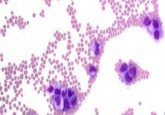Whole-exome sequencing study identifies NF1 as a ‘major player’ in melanoma

A new comprehensive analysis of more than 200 melanoma samples has demonstrated that mutations of the tumor suppressor gene NF1 may be a major contributor to the development of some melanomas. They study was carried out at Yale University (CT, USA) and the results appeared this week in Nature Genetics.
Cancer researchers around the world are continuing to investigate the role of the various genes and genetic changes involved in the development of melanomas, as in approximately 30% of cases the driving genetic abnormalities are still undetermined.
The Yale team, led by experts at Yale Cancer Center, utilized whole-exome sequencing technology to analyze 213 melanoma samples in order to further investigate the genetic causes of melanoma.
The work authenticated NF1 as the third most commonly mutated gene in melanoma, observed particularly in individuals who were older and had more mutations in their tumors. “The key finding is that roughly 45% of melanomas that do not harbor the known BRAF or NRAS mutations display loss of NF1 function, which leads to activation of the same cancer-causing pathway,” commented Michael Krauthammer of Yale University, the study’s corresponding author.
Ruth Halaban of Yale, lead author of the study, explained further about the role of NF1 mutations: “Loss of NF1 requires more accompanying changes to make a tumor. Our study identified changes in about 100 genes that are present only in the malignant cells and are likely to be causative. This panel of genes can now be used in precision medicine to diagnose malignant lesions and can be applied to personalized cancer treatment.”
Sources: Krauthammer M, Kong Y, Bacchiocchi A et al. Exome sequencing identifies recurrent mutations in NF1 and RASopathy genes in sun-exposed melanomas. Nat Genet. doi: 10.1038/ng.3361 (2015) (Epub ahead of print); Yale University press release



